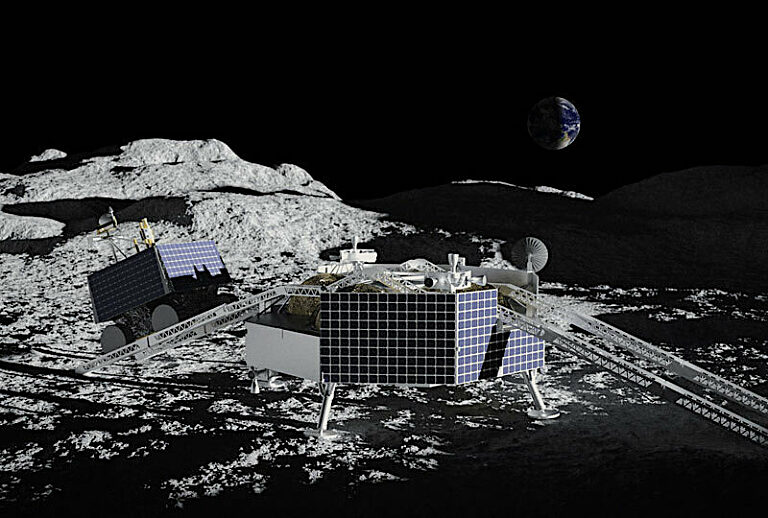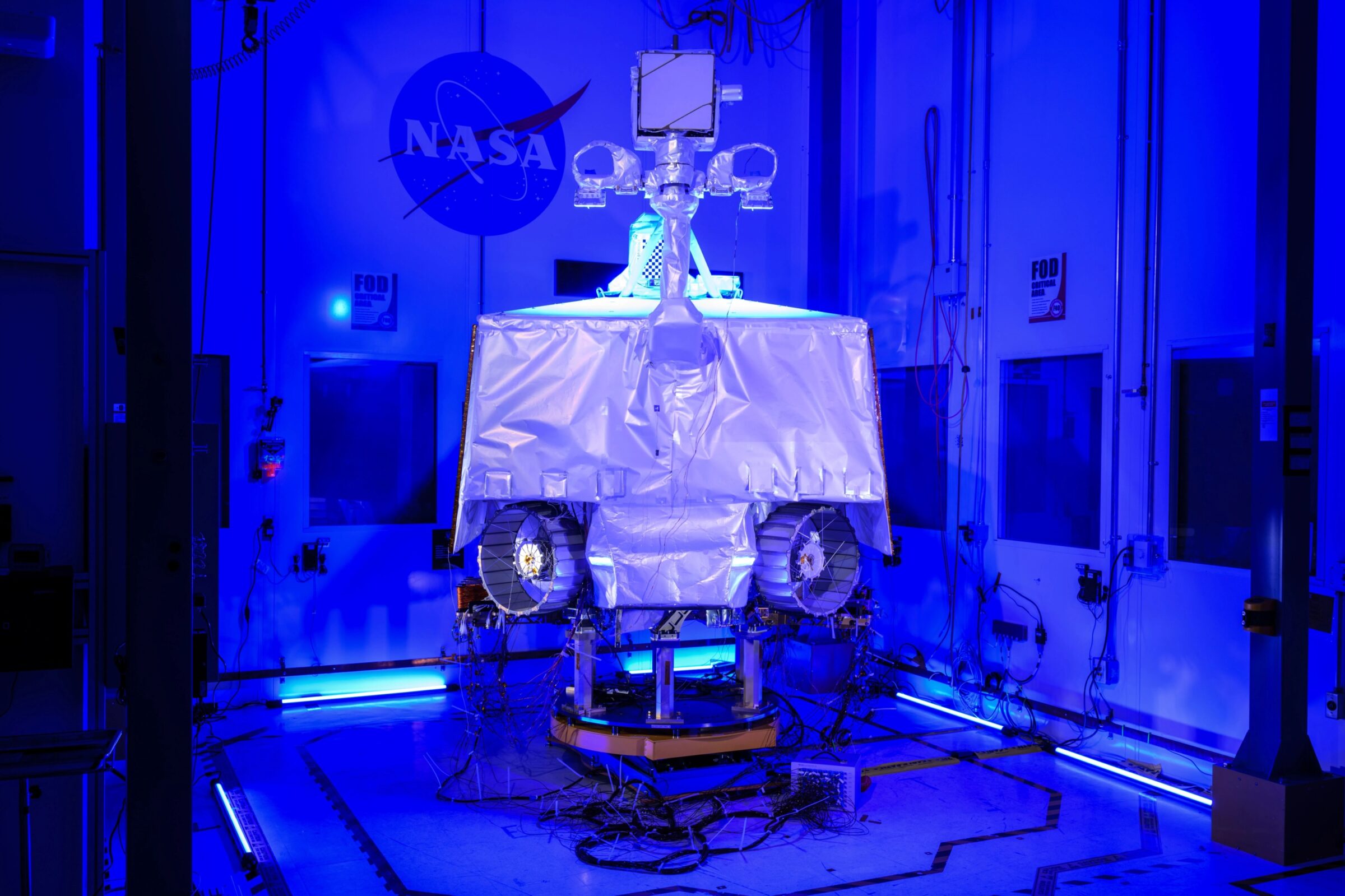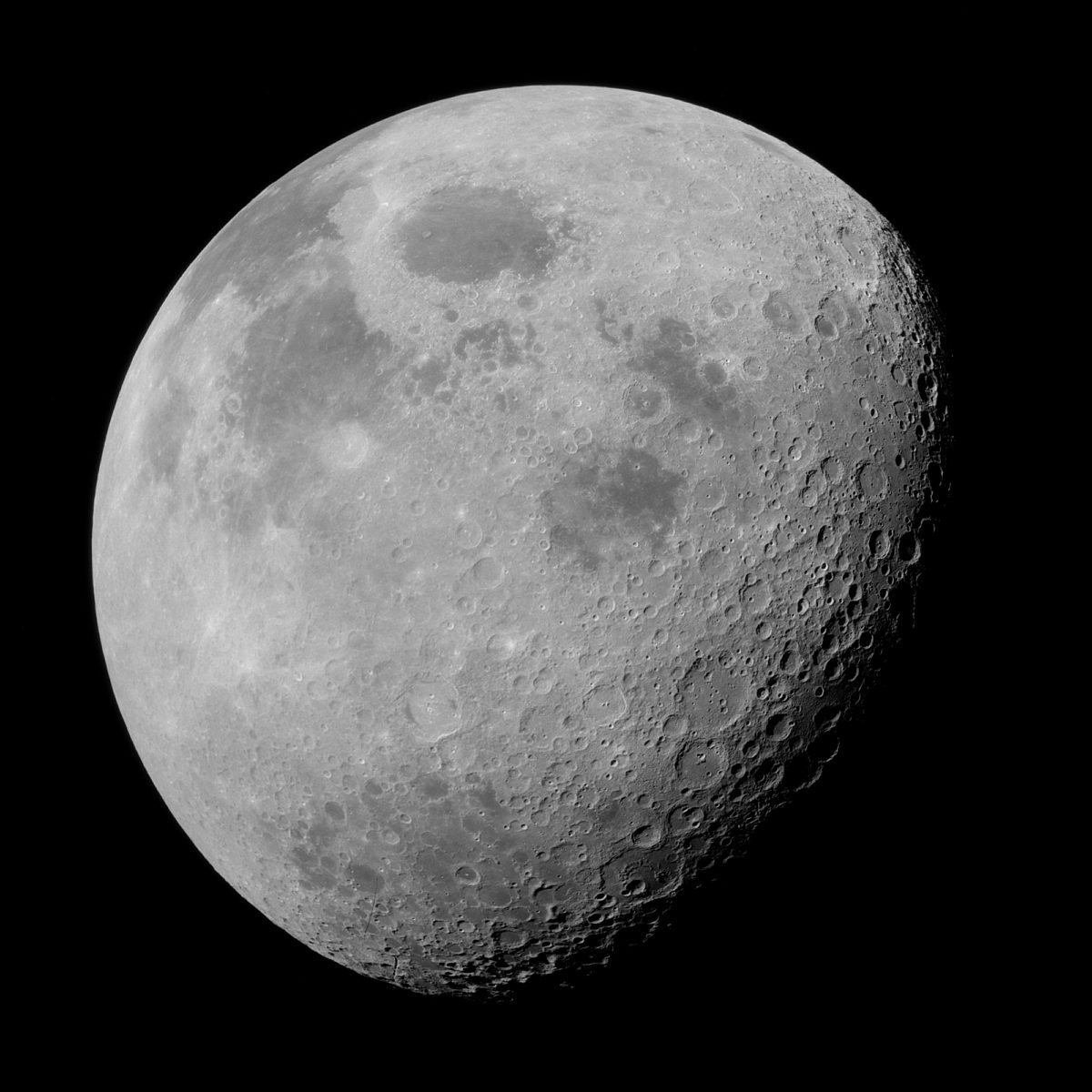Casey Dreier • Jul 23, 2024
For parts: Lunar rover, never used
NASA cancels a lunar rover months away from completion
On July 17, 2024, NASA announced its intent to cancel the VIPER mission to the Moon. VIPER (Volatiles Investigating Polar Exploration Rover) is designed to seek out near-surface lunar ice and other potential resources within permanently shadowed regions of the Moon's south pole.
The cancellation came as a shock to the lunar science and exploration community. VIPER was fully assembled and beginning its final testing series to qualify for launch. Not since the failed attempt to end the Dawn mission in 2006 has a project been canceled so far into its development.
According to NASA, the agency has spent approximately $450 million on the spacecraft, about 74% of the project’s planned cost. NASA has additionally spent more than $250 million on a separate $322 million commercial contract with Astrobotic to launch and land the rover on the Moon. NASA leaders stated their intent to continue the commercial payload contract, with an inert chunk of metal serving as a mass replacement for the science rover. This would validate Astrobotic’s landing capabilities at minimal additional cost to the government.

Why is NASA canceling VIPER?
It comes down to money and NASA science’s lack thereof.
VIPER was budgeted to cost $505 million to build and operate for 100 days on the lunar surface, including surviving multiple 14-day lunar nights. However, VIPER’s assembly was delayed due to supply chain shortages, and its ride on Astrobotic’s next-generation Griffin lunar lander was delayed at least a year to the fall of 2025. NASA estimated this would add another $104 million to the cost of the project over the next two years, money that the beleaguered Science Mission Directorate simply does not have. Agency representatives stated that, by canceling the project now, NASA will save $84 million over the next two years.
While $84 million may not seem like much for an agency with a $25 billion annual budget, the Science Mission Directorate (SMD), which funds robotic missions such as VIPER, is facing a severe budgetary shortfall. Furthermore, cost overruns are not spread evenly across the agency: the money would have to come from the Planetary Science Division, specifically from the Lunar Discovery and Exploration Program (LDEP) — VIPER’s budgetary home.
VIPER was already planned to receive $33 million in FY 2025 to wrap up development and operate the mission on the Moon. This means the cost difference of a one-year delay is $71 million, which would be spread out over two fiscal years if the launch occurred in the fall of 2025. Based on projections from NASA’s FY 2025 budget request, $20 million of this would be for operations and program closeout in FY 2026, leaving an additional $51 million necessary to continue the project in 2025.
From the perspective of NASA’s science leadership, however, finding $51 million in the existing budget presents some impossible choices. Within LDEP, the only significant sources of funding available for VIPER would be to reduce the politically popular Commercial Lunar Payload Services program (CLPS), cut funding to scientific instrument development for CLPS missions, or cut funds for science instrumentation for upcoming Artemis missions. None of these were deemed acceptable tradeoffs.
| FY 2025 | FY 2026 | FY 2027 | |
| VIPER (original plan) | $33 | $0 | $0 |
| Commercial Lunar Payload Services (CLPS) | $224.1 | $254.4 | $254.5 |
| Lunar Trailblazer | $3.3 | $0.8 | $0 |
| Robotic Lunar Science Instruments | $85.1 | $95.9 | $97.2 |
| Artemis Crewed & Deployed Instruments | $51.8 | $43 | $31 |
| Lunar Science Support & Mgmt | $27.4 | $29 | $30 |
| Future Mission Studies | $11.4 | $11.6 | $32.9 |
| Lunar Reconnaissance Orbiter (LRO) | $22.1 | $22.1 | $22.1 |
| Total Proposed LDEP | $458.2 | $456.8 | $467.7 |
| Additional needed for VIPER if delayed to Q4 FY25 | +$51 | +$20 | $0 |
Looking for money outside of LDEP poses its own problems. The Planetary Science Division has already endured nearly half a billion dollars in budget cuts last year and is struggling to advance its top scientific priorities. Mars Sample Return, the top priority of the current decadal survey, has seen its budget slashed, and its future is uncertain. NEO Surveyor and Dragonfly are in their peak development periods, and budget cuts to either program would cause severe (and expensive) disruptions. Additionally, thousands of planetary scientists depend on research and analysis funding. There are no easy answers.
Finding “only” $71 million over two years assumes, of course, that VIPER launches as planned in the fall of 2025. NASA leadership highlighted concerns about future delays of the Astrobotic Griffin lander causing additional costs to the agency. Even a small slip in 2025 would require close to a year delay due to lighting conditions at the lunar south pole being subpar for VIPER’s energy needs. Given that Astrobotic has still not landed its first-generation lunar lander, NASA officials are likely worried about the viability of Griffin’s schedule. Ongoing delays in the lander would add ongoing and unpredictable costs to NASA’s over-burdened science portfolio.
There is an additional consideration as to why VIPER was canceled: the rover was not originally identified as a science priority in the planetary science decadal survey. That doesn’t mean the mission won’t return valuable science, but it does mean that, when pressed, NASA leadership preserved the missions explicitly outlined in the decadal at the expense of missions that weren’t.
What happens next
All of this has happened before. All of this will happen again. Budget uncertainties are a reality of space exploration, as are cancellations when missions increase in cost. But it doesn’t mean that the story of VIPER is over.
As of writing, NASA intends to “disassemble and reuse VIPER’s instruments and components” for future Moon missions. NASA will also “consider expressions of interest” from industry and international partners who would propose new paths forward for VIPER on their own dime — it is unclear if those paths forward would require supporting the science team already in place, or by what metrics NASA would consider turning over the rover to a private entity.
The team behind VIPER was not provided an opportunity to offer its own solutions for cost-savings to the project. They are organizing a community response to the cancellation, pushing back against it and asking NASA to reconsider the decision.
Congress, interestingly, has already partially weighed in. The fiscal year 2025 NASA budget put forward by the House of Representatives includes $75 million of additional spending flexibility to the Lunar Discovery and Exploration Program — up to $533 million. That more than covers the increased costs of VIPER. However, the House budget does not increase the overall planetary science budget by enough to cover that increase and other spending mandates for Mars Sample Return and NEO Surveyor. It would require draconian cuts to other programs. The Senate will release its own NASA budget on July 25.
The public value of commercial partnerships
NASA’s Commercial Lunar Payload Services program is an experiment, one where the public sector invests in private companies to provide access to the lunar surface, ideally to create a new marketplace at and around the Moon. The private sector is enticed to invest money to build out these systems with the promise of future profits, potentially very large profits. The public benefits from this deal — at least initially — through the lowered cost of access to the Moon, enabling more activities that serve the public interest than would have otherwise been possible. Science has an intrinsic value to society, and fundamental research is one of the clearly defined domains of the public sector. It is the variety of scientific returns from CLPS that ensures immediate value is gained from the public funding of private-sector development.
But canceling VIPER breaks that dynamic. The public sector will now pay upwards of $322 million to a private company to launch a block of metal to the Moon. This raises questions about what NASA is really trying to achieve with this experiment: profits for a select few or scientific inquiry and exploration for all?
CLPS: NASA's commercial Moon landing missions
NASA is funding a fleet of commercial robotic Moon missions as part of the agency's Artemis program.
The Moon, gateway for science and exploration
The Moon is the only world besides Earth ever walked on by humans. By studying it, scientists can learn about Earth’s past and better understand worlds throughout the galaxy.
Support our core enterprises
Your support powers our mission to explore worlds, find life, and defend Earth. You make all the difference when you make a gift. Give today!
Donate

 Explore Worlds
Explore Worlds Find Life
Find Life Defend Earth
Defend Earth




